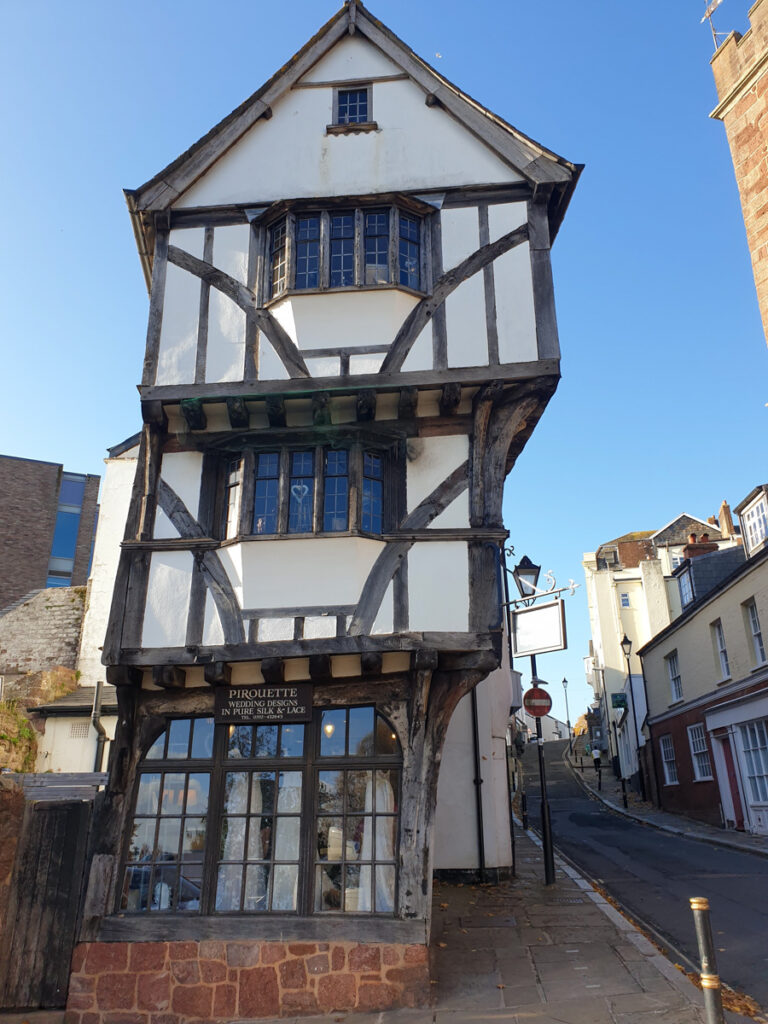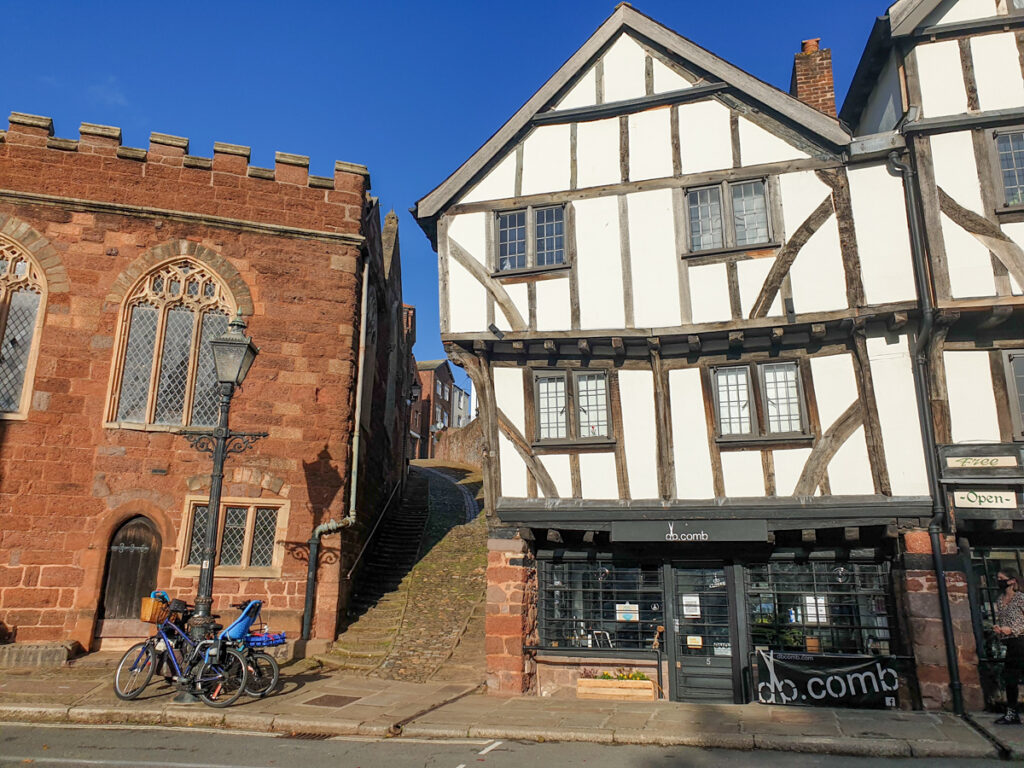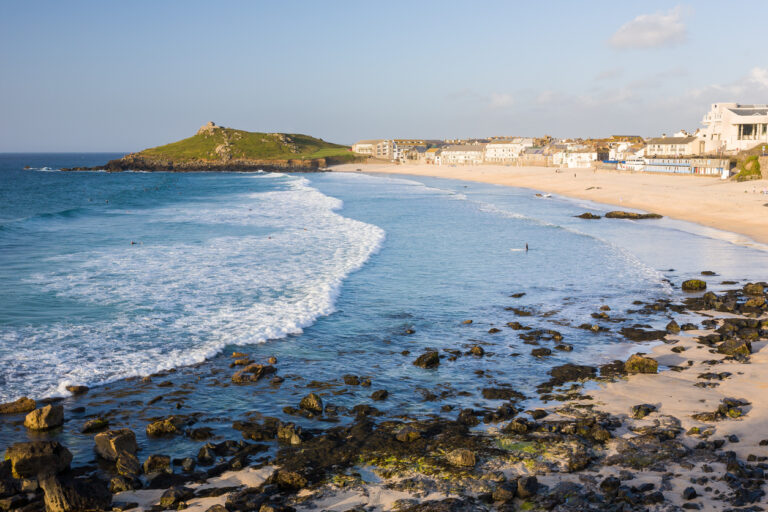The House That Moved, Exeter: History and Visiting Info!
While Exeter is full of bucket-list attractions like Exeter Cathedral and the historic quay, it’s a city of many secret, hidden attractions too.
The city was tragically bombed heavily in the Second World War, which has turned the city into a patchwork of historic buildings and Medieval homes.
Walk around its enigmatic streets and you’ll find many echoes of its past.
One of these is the House that Moved, a charming historic building with a fascinating story.
What is the House that Moved?
Nowadays, the House that Moved is actually a bridal shop!
However, it started life as a traditional Tudor/ Medieval home.
It’s unsure when it was first built (historians have estimated from 14th to 16th Century), but the best guess is around 1450, which is actually just before the Tudor age.
This would make it one of the oldest timber-framed houses in Devon.
It’s majestic history certainly makes it one of the best things to do in Exeter, and well worth visiting if you’re spending a weekend here.
Why did the house move?

It was 1961, just 16 years after the Second World War had ended.
The Exeter Blitz affected the city a lot, and they lost countless beautiful historic buildings throughout the bombing of their city.
So, when plans were proposed to build a new road through the city centre (which was essential due to the population increase), people were aghast at the fact of another one of their buildings being demolished.
The House That Moved stood at the corner of Edmund and Frog Street, and was one of the oldest buildings in the city.
So, instead of knocking it down, they proposed it be moved!
After a lot of lobbying from archaelogists and historians – they argued that the city really couldn’t afford any more building losses – the request was approved and the building was listed.
This meant that everything possible should be done to save it, despite the fact that it was in a state of disrepair at the time.
The government also contributed £10,000 to save the building.
The spot that was selected, on West Street, had actually been home to a 14th century property which had been demolished in the 1940s, when the council had deemed it not worth saving. It’s a curious incident of history repeating itself!
How did they move it?
The house needed a lot of TLC, but it was moved from 9th December 1961.
Just as you might use a jack to raise a car, the building was raised a few inches and put on a set of metal wheels, taking care not to damage the timbers!
Placed on steel rails, the building was slowly inched over to the edge of Edmund Street, and then to its new position.
This was no mean feat – the building weighed 21 tonnes (that’s 21,000 kg!).
It needed a lot of refurbishment when it arrived at its spot, but was embedded into the ground to make it look like it was always there, and then completely restored on the outside.
The timbers had woodworm treatment and the windows were replaced, to ensure that, after all of this painstaking effort, it wouldn’t crumble after the move.
Luckly, all of the efforts paid off, and it still stands there 60 years later.
How to visit the House That Moved

You can find the House That Moved by following this Google Maps link. It’s at the bottom of Stepcote Hill, which is a cobblestone way lined with historic buildings (and also worth checking out!).
If you happen to be in the market for a wedding dress, it is a bridal shop called Pirouette.
If you’re not, you can see it from the outside. The overhanging levels and historic timber are well worth admiring!
There are a few similar-looking buildings in the area (like the one pictured above!) but the House That Moved definitely stands out against its neighbours.
It’s close to some other historic Exeter attractions, like the Medieval Exe Bridge. Plus, from here you can walk to the fascinating Exeter Quay.
Or, walk up the hill to see Exeter Cathedral or Parliament Street which is the narrowest street in the UK.
If you’re interested in exploring all of Exeter’s Medieval buildings and learning why it was such an important city in this era, I highly recommend taking the Red Coat Medieval Tour which will teach you all about it!






